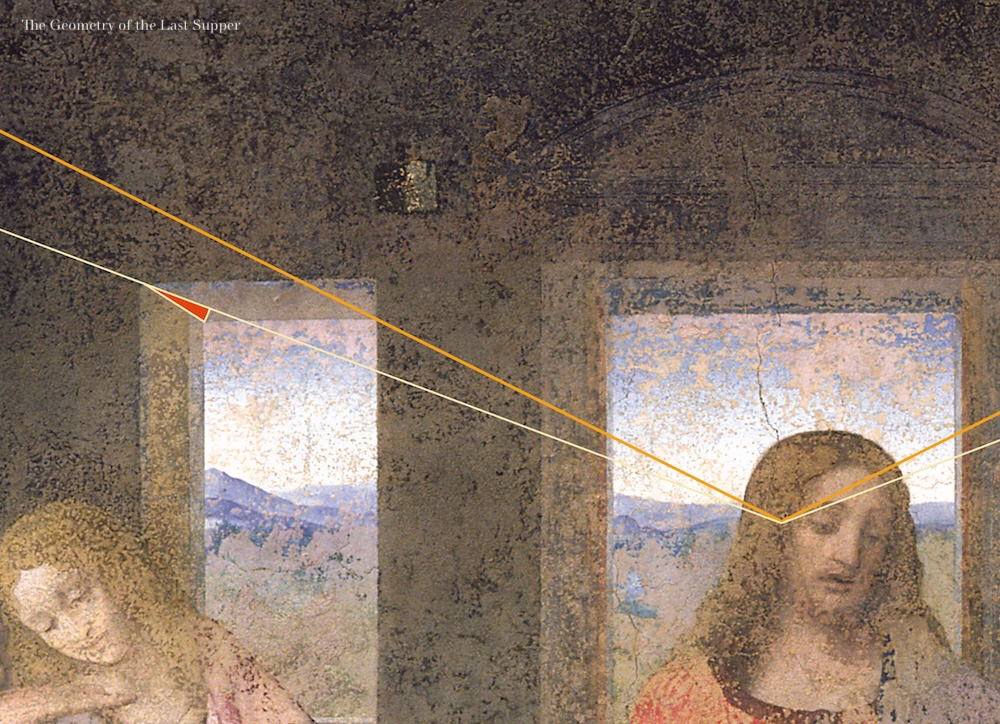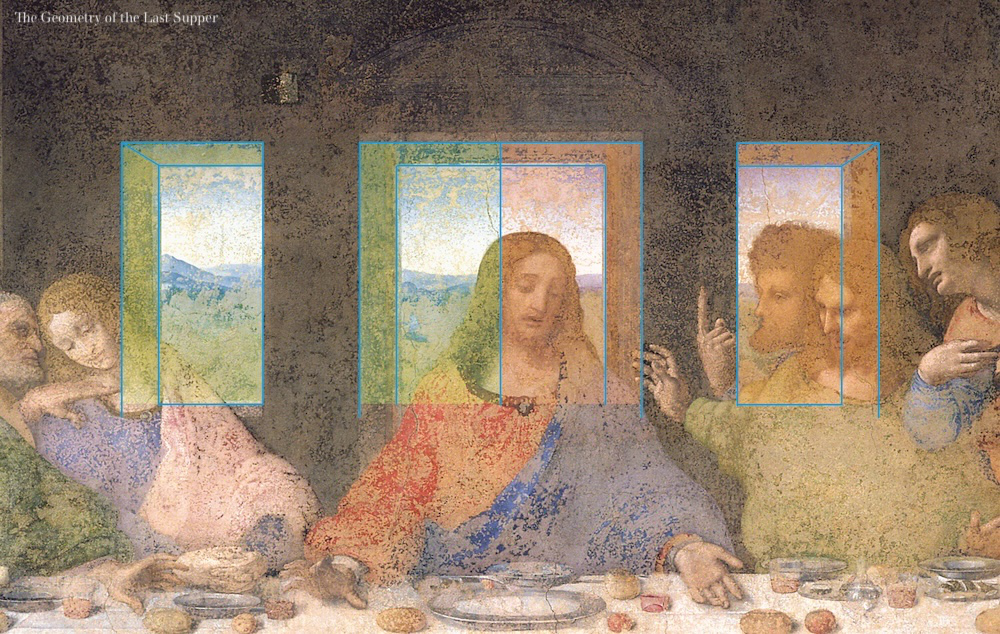Breaking the Law #2

Leonardo takes such liberty with the perspective of the windows that we might question whether he resorted to some other logic significant enough to justify this emancipation from a strict obedience to the theory.
The hypothesis of a hidden purpose driving the composition of the three apertures (the door and the two windows) gains momentum as we observe that the proportions of the windows are in fact directly related to the proportions of the door. When we place the two windows side by side, we find that they fit perfectly into the doorframe!

A symbolic approach could well explain this remarkable choice. If we were to associate the apertures with the Holy Trinity, the door would then typically be the symbol of the Father, and the two windows would represent the Son and the Holy Spirit. St John the Evangelist writes in his gospel that Jesus was sent by the Father to accomplish his work, and that the Spirit proceeds from the Father. In The Last Supper, the central aperture, associated with the Father, ‘gives birth’ in a geometrical sense to the other two apertures related symbolically to the Son and the Holy Spirit. The windows naturally share the same formal identity as the door, which an obedience to the laws of perspective would have made impossible.